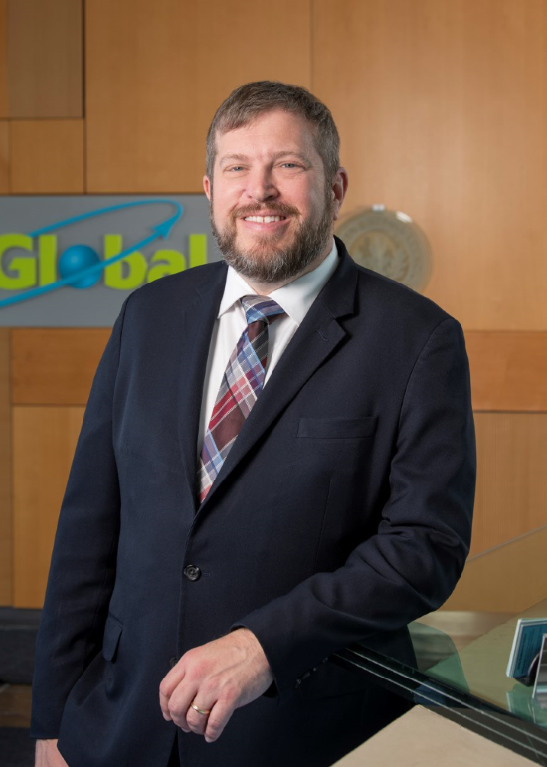Chief Science Advisor is part of an ambitious pandemic response team to speed drug cocktails for COVID-19 and other future virus waiting in the wings.

MRIGlobal Chief Science Advisor Gene G. Olinger, Ph.D. is a part of an international team of scientists that has formed a plan for an accelerated pipeline for developing drugs to battle the COVID-19 pandemic. The pipeline could speed new and better treatments that the newly diagnosed and recently exposed could take at home to prevent serious illness.
The proactive drug development strategy could also offer a first line of defense against future pandemics, the researchers say. The approach would allow scientists to be ready with an arsenal of drugs that could be quickly moved into clinical trials when a dangerous new infection appears, whether coronavirus or another pathogen. The goal is to make effective treatments available in weeks, not months or years.
“We need to pro-actively develop drug cocktails against virus families as a whole, for example all coronaviruses, to be ready on ‘day 1’ if a new virus or variant emerges. The cocktail should be low cost, easy to transport and distribute, and easy to self-administer—therefore available to people across the globe,” said researcher Judith M. White, PhD, a professor emeritus at the University of Virginia School of Medicine. “We hope that this concept of ‘smart drug cocktails’—smart because of the choice of drugs for testing and computer modeling of their effectiveness in humans—will be the basis for a robust coordinated effort against coronaviruses and other pathogenic viruses (e.g., Zika and Lassa fever viruses, just to name a few).”
“There are a variety of strategies to develop antiviral drugs being considered by national and international funding agencies,” said co-author Gene Olinger who has been working on this approach for more than fifteen years. “We must use all of these strategies to provide safe, effective and rapid responses to newly emerging viruses. Combinations of existing drugs remains a viable and rapid response method during emergencies. COVID-19 has been a warning of the need to invest in these strategies that could provide cost-effect and readily available drugs for use against existing and future viral threats for both humans and animals. We have too few options and need to have solutions that save lives.”
Fast, Safe, Effective Pandemic Response
The new strategy comes from White, of UVA’s Departments of Cell Biology and Microbiology, and colleagues in Seattle, at the University of Washington and the Fred Hutchinson Cancer Research Center, the University of Maryland, and MRIGlobal, as well as collaborators in Estonia, Finland and Norway. The scientists believe that prioritizing the development of drug cocktails – treatments that combine two or more medicines – would reduce the burden on healthcare systems and help prevent disease spread by limiting a virus’ ability to adapt to its hosts. This type of combination approach is already the norm for treating viruses such as HIV.
The researchers outline a five-point approach to accelerate the identification and administration of effective drug cocktails:
- Prioritize drugs that people could take at home, either by mouth or inhalation, after exposure or when symptoms first appear
- Focus on drug combinations, rather than individual drugs, to reduce the chance viruses will become drug resistant
- Prioritize drugs that are already approved or are in advanced clinical trials to accelerate the process of safety and effectiveness assurance
- Focus on drugs that can be given to people at doses that will yield anti-viral effects without toxic side effects
- Use advanced computer models to identify useful drug combinations and speed development
To demonstrate the potential of computer modeling for this purpose, Joshua T. Schiffer, MD, of Fred Hutchinson Cancer Center, developed a model to assess the potential clinical effectiveness of drug pairs for treating COVID-19. Pairing drugs, the researchers say, could make for treatments that are more effective than individual drugs alone. Identifying drugs with this type of “synergy,” they say, could potentially turn two medicines of only modest benefit into a potent treatment.
“Models that incorporate both the properties of the drugs and the biology of the virus spreading against an immune response can be used to identify the best way to dose promising treatments,” Schiffer said. “These models suggest strategically combining drugs may add substantial benefit.”
The scientists emphasize that better treatments for COVID-19 will not supplant the need for vaccination and are a complement to existing strategies. But they say their strategy could lead to better outcomes for patients who contract COVID-19 – or the next dangerous virus waiting in the wings.
“Having easily deployable, easily administered, inexpensive drug cocktails on the shelf when a new virus outbreak occurs would buy time from virus discovery to development and roll out of sequence dependent countermeasures like vaccines and designer drugs, and could therefore blunt the initial stages of an epidemic,” White said.
Findings Published
The researchers have described their treatment-development strategy in a peer-reviewed article in the scientific journal mBio. The research team consisted of White, Schiffer, Rachel A. Bender Ignacio, Shuang Xu, Denis Kainov, Aleksandr Ianevski, Tero Aittokallio, Matthew Frieman, Gene G. Olinger and Stephen J. Polyak.
The work was supported by the National Institutes of Health, grants AI114776, AI121129 and K23AI129659; the Estonian research council, grant MOBTT39; the Sigrid Jusélius Foundation; and the Washington Research Foundation.

